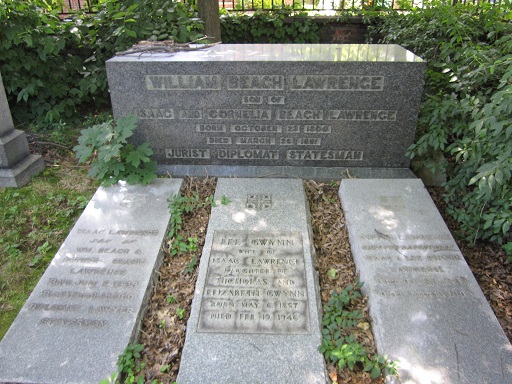In the present day Queens of terraced high rises, a little trolley rail imbedded in blacktop remains. While bones of steel remain as buried artifacts, bones of many colonial and Early American settlers are lost and forgotten. Long before there were any cemeteries or tombstone makers, Long Island settlers (the Pullis family among them) were faced with death and the problem of burial. The earliest solution was to fence off a corner of the family farm and turn it into a private burial ground.
There were many such plots in Queens once but the cutting of streets into estates and the coming of (mid-19th century) large public cemeteries such as Cypress Hills (1852) and Lutheran-All Faiths (1852) made this approach to burial obsolete. It also left the plots isolated and subject to vandalism and neglect. Many (including Native Americans, African American and poor immigrant small burial plots were obliterated. A notable one was the Berrien-Remsen Burying Ground, located at the north end of Berrien's Lane at the water’s edge, facing Berrien's Creek, Astoria. It was obliterated in 1902 when Consolidated Gas Company filled the creek between the shore and Berrien's Island.
Church burial sites were also destroyed. The Trinity Methodist Church was moved in 1886 from the south side of Main Street, Astoria, near its junction with Astoria Boulevard, to Crescent Street and 30th Road. The remains were re- interred, but as late as 1961, workers excavating the site uncovered forgotten skulls and bones. Prominent families, unlike many less affluent ones, were able to transfer their deceased family members to large public cemeteries. The Hallet Burying Ground, located at Main Street in Astoria and containing all the Hallets from the 1600s to 1861, was sold for business reasons. All the stones then existing were transferred to Mt. Olivet Cemetery in Maspeth where they still may be seen.
The disappearance of small burial plots may be attributed in no small measure to the Rural Cemetery Act of 1847 legislation legalizing large public cemeteries, along with residential and commercial development. However, a few small family burial plots survive in the sea of houses which now cover every part of Queens. Among them are:
1. The Remsen Family Cemetery, a survivor from Colonial times, is the scene of the annual American Legion ceremonies at Trotting Course Lane and Metropolitan Avenue. This plot contains eight known graves including Revolutionary War General Abraham Remsen and Jeromus Remsen.
2. The Alsop Burying Ground inside Calvary Cemetery, 291 feet away from the Penny Bridge entrance at Laurel Hill Boulevard, remains. When the Alsop Family Farm was deeded to the Roman Catholic Diocese in 1846 the arrangement provided that the Alsop Family Plot remain inviolate and so it has to this day.
3. The Lawrence Family Plot at 20th Road and 30th Street in Long Island City is a well preserved burial plot containing 100 odd monuments dating from 1751 to 1975.
4. The Betts Family Cemetery sits inside Mount Zion Cemetery near 54th Avenue and 58th Street in Maspeth. Mt. Zion was built in 1893, enveloping the Betts family burial plot; Captain Richard (1613-1713) and wife Joanna’s home once stood at what is now the southwest corner of the cemetery.
5. The Pullis Family Plot in Juniper's passive park contains Thomas Pullis, wife Elizabeth and a child. Thomas Pullis Sr. took steps to insure its permanent protection. Pullis, Sr. whu died May 5, 1854, aged 76 years, bequeathed his farm to his three sons with the condition that this farm was never to be sold. In his estate funds were provided to build a brick wall around the cemetery so that it would be protected permanently. Ed Shusterich and other dedicated volunteers continue to maintain the Pullis plot so that it is now the crown jewel of Juniper Valley Park.
Today, bones uncovered by the pavement of progress, bear witness to an earlier Queens whose farms were many and whose houses were few.
Some information taken from “300 Years of Long Island City” by Vincent F. Seyfried




